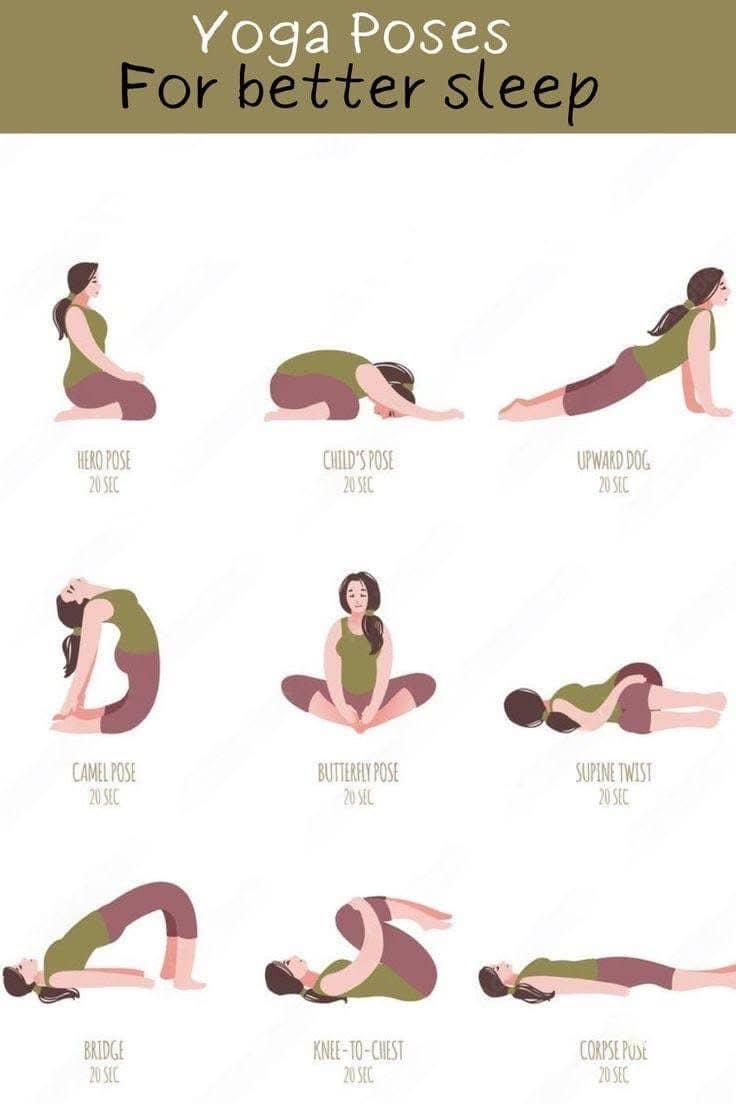Yoga Poses for Better Sleep: A Detailed Guide to Restful Nights
In our modern, fast-paced lives, achieving a good night’s sleep can often feel like an elusive goal. Stress, anxiety, and the constant demands of daily life can make it difficult to unwind and get the rest we need. Fortunately, yoga offers a natural and effective way to improve sleep quality. In this comprehensive guide, we’ll explore a variety of yoga poses specifically designed to promote better sleep. Whether you’re an experienced yogi or a beginner, these poses can help you relax, release tension, and prepare your body and mind for a restful night.
The Importance of Sleep and How Yoga Can Help
Sleep is essential for overall health and well-being. It allows our bodies to repair and rejuvenate, supports cognitive function, and helps regulate mood. However, many factors can disrupt our sleep, including stress, poor sleep habits, and physical discomfort.
Yoga, with its combination of physical postures, breathing exercises, and meditation, can be a powerful tool for improving sleep. Here’s how yoga can help:
- Reduces Stress and Anxiety: Yoga encourages mindfulness and deep breathing, which can calm the nervous system and reduce stress hormones.
- Relieves Physical Tension: Gentle stretches and poses can release muscle tension, making it easier to relax.
- Improves Circulation: Certain poses enhance blood flow, which can help regulate sleep patterns.
- Promotes Relaxation: Yoga helps activate the parasympathetic nervous system, which is responsible for rest and digestion.
Yoga Poses for Better Sleep
Let’s explore some of the best yoga poses for improving sleep quality. Remember to move slowly and mindfully, focusing on your breath. If you’re new to yoga, consider using props like yoga blocks or a bolster to support your body.
1. Child’s Pose (Balasana)
Child’s Pose is a gentle, restorative pose that helps calm the mind and relieve tension in the back, shoulders, and neck.
- How to Do It: Kneel on the floor, touch your big toes together, and sit on your heels. Separate your knees about hip-width apart. Exhale and lay your torso down between your thighs. Extend your arms forward with palms facing down. Rest your forehead on the mat.
- Benefits: This pose stretches the lower back and hips, promoting relaxation and stress relief.
2. Upward Dog Pose (Urdhva Mukha Svanasana)
This pose helps to open the chest and improve posture, which can aid in relaxation.
- How to Do It: Lie face down on the mat with your hands under your shoulders. Press into your hands and lift your chest off the mat, keeping your legs extended and the tops of your feet pressing into the mat.
- Benefits: It stretches the chest and lungs, strengthens the spine, and can help alleviate stress.
3. Camel Pose (Ustrasana)
Camel Pose is a deep backbend that opens the chest and improves flexibility.
- How to Do It: Kneel on the mat with your knees hip-width apart. Place your hands on your lower back for support. Inhale and lift your chest, arching your back and reaching your hands towards your heels. Keep your neck in a neutral position.
- Benefits: It stretches the front of the body, opens the chest, and can help relieve tension in the back.
4. Butterfly Pose (Baddha Konasana)
This pose is excellent for opening the hips and promoting relaxation.
- How to Do It: Sit on the floor with the soles of your feet together and your knees bent out to the sides. Hold your feet with your hands and sit up straight. You can gently flap your knees up and down like butterfly wings.
- Benefits: It stretches the inner thighs and hips, and can help calm the mind.
5. Supine Twist Pose (Supta Matsyendrasana)
Twists are great for releasing tension in the spine and improving digestion, which can contribute to better sleep.
- How to Do It: Lie on your back and draw your knees into your chest. Extend your arms out to the sides, palms facing down. Drop both knees to one side while keeping your shoulders flat on the mat. Turn your head in the opposite direction of your knees. Hold for a few breaths, then switch sides.
- Benefits: This pose stretches the spine, shoulders, and hips, and helps relieve lower back pain.
6. Corpse Pose (Savasana)
Savasana is the ultimate relaxation pose, often used at the end of yoga practice to integrate the benefits of the session.
- How to Do It: Lie flat on your back with your legs extended and arms at your sides, palms facing up. Close your eyes and focus on your breath. Allow your body to completely relax.
- Benefits: It promotes deep relaxation, reduces stress, and prepares the body for sleep.
Tips for a Successful Yoga Practice Before Bed
- Create a Calm Environment: Dim the lights, play soft music, and ensure your space is comfortable and quiet.
- Focus on Your Breath: Deep, slow breathing helps activate the parasympathetic nervous system, promoting relaxation.
- Be Consistent: Try to practice yoga at the same time each night to establish a routine.
- Listen to Your Body: Avoid pushing yourself too hard. Yoga before bed should be gentle and relaxing.
Conclusion
Incorporating yoga into your nightly routine can significantly improve your sleep quality. By practicing these poses regularly, you can reduce stress, release physical tension, and create a sense of calm that prepares your body and mind for restful sleep. Remember, consistency is key, so make yoga a regular part of your bedtime ritual. Sweet dreams!










